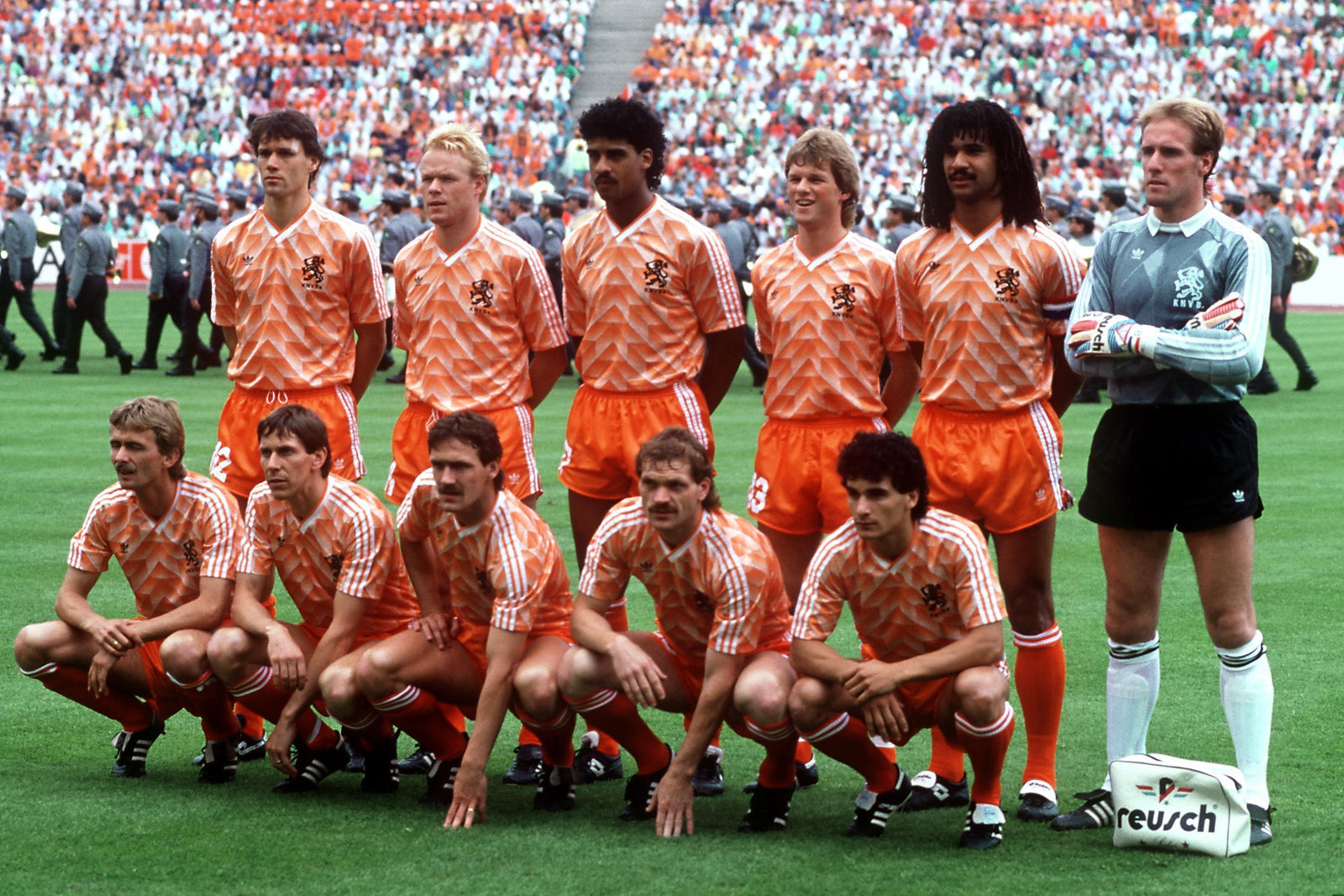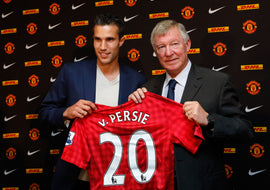
The Holland 1988 Shirt
The Holland 1988 Shirt: A Timeless Icon in Football History
When we think of iconic football shirts, few are as instantly recognisable and celebrated as the Netherlands' 1988 shirt. Worn during the Dutch national team’s unforgettable European Championship victory, this kit transcended the sport, becoming a symbol of a golden era in football and a design masterpiece. As a visual and cultural artifact, the 1988 shirt represents not just a triumph on the pitch but also an evolution in football kit design that resonates even today. Let’s explore the design, history, and legacy of the Holland 1988 shirt, and why it remains one of the most iconic football kits of all time.
A Historical Context: The 1988 European Championship
Before diving into the shirt itself, it's crucial to place it within the context of the tournament. The 1988 UEFA European Championship, hosted in West Germany, was a defining moment for Dutch football. Under the stewardship of legendary coach Rinus Michels, the Netherlands had assembled one of the most talented teams in Europe, boasting an array of star players like Marco van Basten, Ruud Gullit and Frank Rijkaard.
The 1988 tournament marked a turning point in Dutch football. They entered the competition as underdogs but emerged as European champions, defeating the Soviet Union 2-0 in the final—a match forever etched into footballing folklore, particularly due to Van Basten's stunning volley, a goal that many consider one of the greatest in the history of the European Championship.
The win was not just a testament to the team's brilliance but also to the national identity that football had cultivated in the Netherlands. The 1988 triumph gave the Dutch their first major international trophy, solidifying their place among the elite in world football. The shirt they wore during this journey became as iconic as the victory itself, representing a unique blend of style, boldness, and cultural identity.
The Design: A Masterpiece in Football Kit History
One of the reasons the Holland 1988 shirt remains so iconic is its design. Created by the German sportswear brand Adidas, this shirt was a departure from the more traditional, conservative football kits of the time. It was bold, energetic, and full of personality—reflecting the flair and attacking football for which the Dutch team had become known.
The Colour and Pattern
The most immediately striking aspect of the 1988 shirt is its vibrant orange color. The Netherlands' national team had long worn orange as their primary color, a tribute to the House of Orange-Nassau, the Dutch royal family. In 1988, the hue of the shirt was a deep, bright orange that made the players stand out on the field. The bold colour choice was also a symbol of the Dutch team's confidence and ambition.
However, it wasn’t just the colour that made the shirt unique; it was the bold geometric pattern that adorned it. The shirt featured an abstract, jagged pattern that gave it an almost 3D-like effect. The design was made up of sharp angles and diagonals, which created a sense of movement and energy, much like the fluid, attacking football the Dutch were famous for. This pattern was ahead of its time and made the 1988 kit stand out in a decade that was full of loud and experimental football kit designs.
The pattern was a daring and unconventional choice, with some even saying it looked like something from a late-80s pop music video. This wasn’t a static, traditional football kit; it was one that embodied the spirit of the Dutch team and their forward-thinking, risk-taking philosophy.
The Players: Heroes of 1988
No discussion of the Holland 1988 shirt would be complete without acknowledging the legendary players who wore it. The shirt is intrinsically tied to the success of the Dutch team, which included a star-studded lineup.
Marco van Basten is undoubtedly the standout name from the tournament. His stunning volley in the final against the Soviet Union is still widely regarded as one of the best goals ever scored in a major international tournament. Van Basten’s brilliance in 1988 capped off an extraordinary career, and his performances in the tournament were mesmerising to watch.
Ruud Gullit, with his powerful style of play, was another key figure in the Netherlands' success. The AC Milan star played a pivotal role in leading the Dutch team to victory, scoring a crucial header in the final against the Soviet Union.
Then there was Frank Rijkaard, who, along with Gullit, formed the backbone of the Dutch team in midfield. Rijkaard’s presence and leadership on the pitch were indispensable.
The shirt was not just a piece of clothing; it became a symbol of the collective genius of these players and their journey to the top of European football.
The Legacy: A Lasting Impact
The Holland 1988 shirt remains a quintessential piece of football history. It is remembered not only for its role in one of the most successful European Championship campaigns but also for the way it captured the spirit of the era. Football kits in the late 1980s were going through a period of experimentation, with designs that pushed boundaries, and the Dutch shirt was one of the standout examples of this.
The shirt’s boldness—both in design and the way it represented Dutch football—had a lasting influence on future generations of football kit designs. It set a precedent for innovative and expressive shirts that weren’t just about function but also about style and identity. Even today, the Netherlands continues to wear orange, and the 1988 shirt remains a benchmark for kits that combine tradition, style, and performance.
For fans of Dutch football, the 1988 shirt has become a symbol of a golden age—a reminder of the great players and unforgettable moments that defined an era. Whether worn by supporters as a retro throwback or admired in museums and exhibitions, it remains one of the most cherished and iconic football shirts in history.

More stories
Sir Alex Ferguson at Manchester United
Sir Alex Ferguson, is one of the most successful and influential football managers in football history. His tenure at Manchester United, lasted fr...
The Rise of Sustainable Fashion and the Boom in Vintage Football Shirts
Sustainable fashion has transformed from a niche movement into one of the most influential forces reshaping the global clothing...

